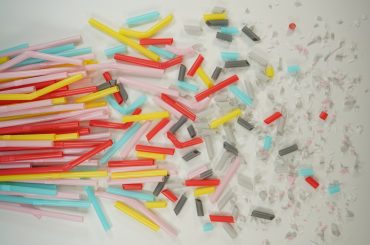Have you ever wondered why Snapple, the popular beverage brand known for its refreshing drinks, made the switch from glass to plastic bottles? The decision to transition to plastic bottles was a significant move that sparked curiosity among consumers. In this article, we will delve into the reasons behind Snapple’s choice to embrace plastic as its preferred packaging material. By exploring the factors that drove this transition, including convenience, cost-effectiveness, and environmental considerations, we will gain insight into the motivations behind Snapple’s switch to plastic bottles. Let’s uncover the story behind this transformation and understand the impact it has had on both Snapple and its customers.
Contents
 Convenience and Portability
Convenience and Portability
One of the key reasons Snapple made the switch to plastic bottles was the increased convenience they offer compared to glass. Plastic bottles are lightweight, making them easier to carry, pack, and store. This lightweight nature makes them ideal for on-the-go consumers who value convenience in their busy lives. With plastic bottles, enjoying Snapple’s refreshing beverages on the move becomes even more effortless.
Cost-Effectiveness and Efficiency
Snapple’s decision to switch to plastic bottles was also driven by the cost advantages and efficiency they offer compared to glass bottles. Plastic bottles are more cost-effective in various ways. Firstly, the production costs of plastic bottles are generally lower than those of glass bottles, making them a more economical choice for Snapple. Additionally, plastic bottles are lighter, reducing shipping and transportation costs. They also require less storage space, leading to more efficient inventory management.
The cost-effectiveness of plastic bottles extends to consumers as well. With lower production and transportation costs, Snapple can potentially pass on the savings to customers, making their products more affordable. This affordability, coupled with the convenience of plastic bottles, enhances the overall value for consumers, making Snapple beverages an accessible and economical choice for refreshment.
Environmental Considerations
Snapple’s switch to plastic bottles was not only driven by convenience and cost-effectiveness but also by a strong commitment to sustainability and environmental responsibility. As a company, Snapple recognized the importance of reducing their environmental impact and took proactive steps to achieve this goal.
Plastic bottles, when properly recycled, offer significant environmental benefits. They are highly recyclable, meaning they can be transformed into new products rather than ending up in landfills. Snapple aimed to encourage and facilitate the recycling process by choosing plastic bottles, contributing to a more circular economy.
Moreover, plastic bottles have a lower carbon footprint compared to glass bottles. They require fewer resources, including energy and water, during the manufacturing process. Additionally, their lighter weight reduces fuel consumption during transportation, further minimizing greenhouse gas emissions.
By embracing plastic bottles, Snapple sought to reduce their ecological footprint and promote sustainability within the beverage industry. Through their commitment to using recyclable materials and minimizing resource consumption, Snapple aims to be an environmentally responsible brand that consumers can feel good about supporting.
 Collaboration and Implementation
Collaboration and Implementation
To facilitate the transition from glass to plastic bottles, Snapple collaborated with R&D/Leverage, a company specializing in the design and development of packaging solutions. This partnership was instrumental in ensuring a smooth and successful shift in Snapple’s packaging materials.
The collaboration involved extensive research and development in designing the optimal plastic bottle for Snapple’s beverages while maintaining the brand’s iconic features. R&D/Leverage worked closely with Snapple to create preforms and blow mold tooling that replicated the shape and “pop” of the original glass bottles [3].
The timeline for Snapple’s switch to plastic bottles began around the end of 2018. Over a period of time, the production lines were gradually transitioned to accommodate the new plastic bottles. This involved retrofitting or acquiring new equipment that could handle the production of plastic bottles at scale.
During the implementation process, Snapple ensured the utilization of new recycled materials in the production of their plastic bottles. This was an important step in aligning their packaging with sustainability goals. By incorporating recycled materials, Snapple aimed to minimize the use of virgin resources and contribute to a more circular economy.
The collaboration with R&D/Leverage, coupled with a carefully planned timeline and the use of recycled materials, allowed Snapple to successfully transition from glass to plastic bottles. This demonstrates their commitment to innovation and sustainability while maintaining the integrity of their iconic packaging.
Benefits and Impact
Snapple’s switch to plastic bottles has brought forth numerous benefits, encompassing convenience, cost-effectiveness, and environmental sustainability. These advantages have positively impacted customers, the company itself, and the environment.
First and foremost, the transition to plastic bottles has enhanced convenience for Snapple consumers. The lightweight nature of plastic bottles makes them easier to carry, pack, and store, catering to the needs of busy, on-the-go individuals. Snapple lovers can now enjoy their favorite beverages effortlessly, wherever they may be.
From a cost perspective, plastic bottles have proven to be more cost-effective for both Snapple and its customers. The lower production costs of plastic bottles compared to glass bottles have contributed to potential savings for Snapple. These savings may be passed on to customers, making Snapple beverages more affordable and accessible to a wider audience.
In terms of environmental sustainability, Snapple’s switch to plastic bottles has made a positive impact. Plastic bottles are highly recyclable, allowing for the efficient reuse of materials and reducing waste sent to landfills. Furthermore, the manufacturing of plastic bottles requires fewer resources, such as energy and water, and has a lower carbon footprint compared to glass bottles. Snapple’s commitment to utilizing recycled materials further contributes to a more sustainable packaging solution.
The benefits and impact of Snapple’s switch to plastic bottles extend beyond customers and the environment. The company itself demonstrates a dedication to providing a quality drinking experience while being mindful of the planet. By embracing plastic bottles, Snapple showcases its commitment to innovation, convenience, and cost-effectiveness without compromising on its environmental responsibilities.
 So, Why did Snapple switch to plastic?
So, Why did Snapple switch to plastic?
In conclusion, Snapple’s switch from glass to plastic bottles was driven by three main factors: convenience, cost-effectiveness, and environmental considerations. Plastic bottles offer increased convenience, as they are lightweight and easier to carry, pack, and store. Moreover, they provide cost advantages by reducing production, shipping, and storage costs for Snapple, which can potentially lead to savings for consumers.
However, the decision to switch to plastic bottles was not solely motivated by convenience and cost-effectiveness. Snapple’s commitment to sustainability played a significant role. Plastic bottles are highly recyclable and require fewer resources during manufacturing, resulting in a lower carbon footprint. By embracing plastic bottles, Snapple aligns with its dedication to environmental responsibility.
This transition demonstrates Snapple’s commitment to providing a quality drinking experience while prioritizing sustainability and customer satisfaction. The switch to plastic bottles not only enhances convenience for on-the-go consumers but also contributes to a more eco-friendly approach to packaging.
In summary, Snapple’s decision to switch to plastic bottles is a strategic move that combines convenience, cost-effectiveness, and environmental responsibility. By prioritizing these factors, Snapple ensures a positive experience for consumers while staying true to their commitment to sustainability. As a result, Snapple continues to quench our thirst for refreshment while preserving the planet for future generations.
Wondering about Dollar General Bags? Read it here.





